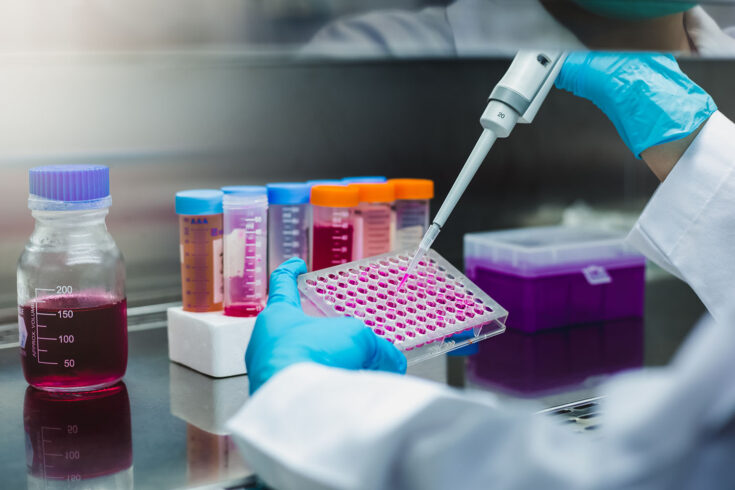Science and Technology Facilities Council
|
|
Scientists identify Achilles heel of lung cancer protein
Researchers have shown that structural interfaces in a protein that drives cancer growth could act as a target for more effective treatments.

Credit: Suriphon Singha, iStock, Getty Images Plus via Getty Images
The study was led by the Science and Technology Facilities Council (STFC) Central Laser Facility (CLF).
The study used advanced laser imaging techniques to identify structural details of the mutated protein which help it to evade drugs that target it.
It is published today (19 March 2024) in the journal, Nature Communications and lays the groundwork for future research into more effective, long-lasting cancer therapies.
Understanding the problem
The epidermal growth factor receptor (EGFR) is a protein that sits on the surface of cells and receives molecular signals that tell the cell to grow and divide.
In certain types of cancer, mutated EGFR stimulate uncontrolled growth, resulting in tumours.
Various cancer treatments block and inhibit mutant EGFR to prevent tumour formation, but these are limited as eventually cancerous cells commonly develop further EGFR mutations that are resistant to treatment.
Until now, how exactly these drug-resistant EGFR mutations drive tumour growth was not understood, hindering our ability to develop treatments that target them.
Utilising cutting-edge technology
In this latest study, scientists at CLF have obtained super-resolution images of a drug-resistant EGFR mutation known to contribute to lung cancer.
This was achieved using an advanced laser imaging technique developed by STFC for this purpose called Fluorophore Localisation Imaging with Photobleaching (FLImP).
FLImP analysis revealed structural details as small as two nanometres and showed for the first time with this level of precision how the molecules in the drug-resistant EGFR mutation interact.
Additional analysis by the Biomolecular and Pharmaceutical Modelling Group at University of Geneva (UNIGE) used advanced computer simulations that combined with the FLImP analysis were able to provide atomistic details of the EGFR complexes.
From this, the team were able to compare the structural details of the mutated and healthy EGFR to identify interfaces between interacting molecules in the drug-resistant mutation critical for tumour growth.
Original article link: https://www.ukri.org/news/scientists-identify-achilles-heel-of-lung-cancer-protein/


